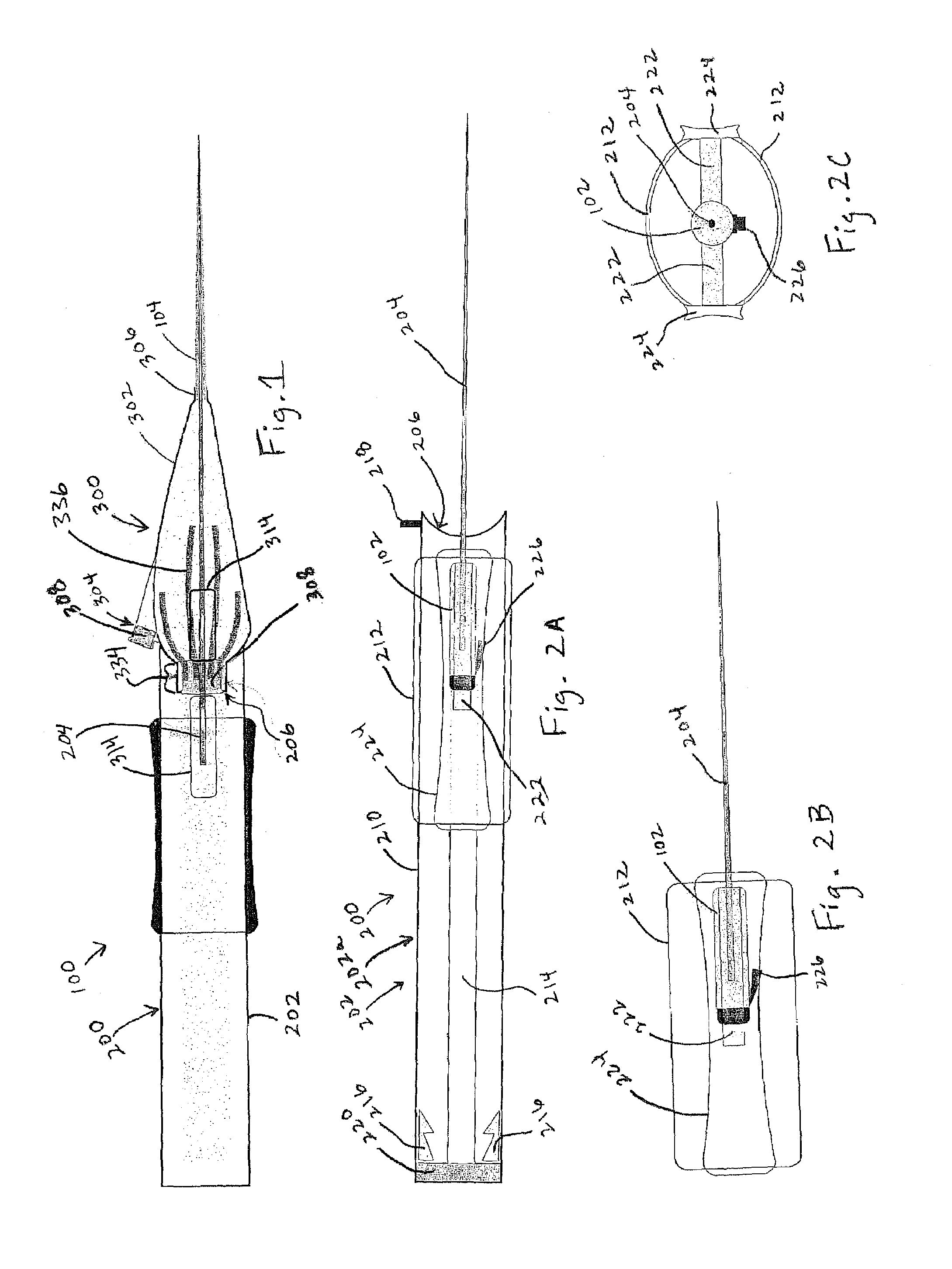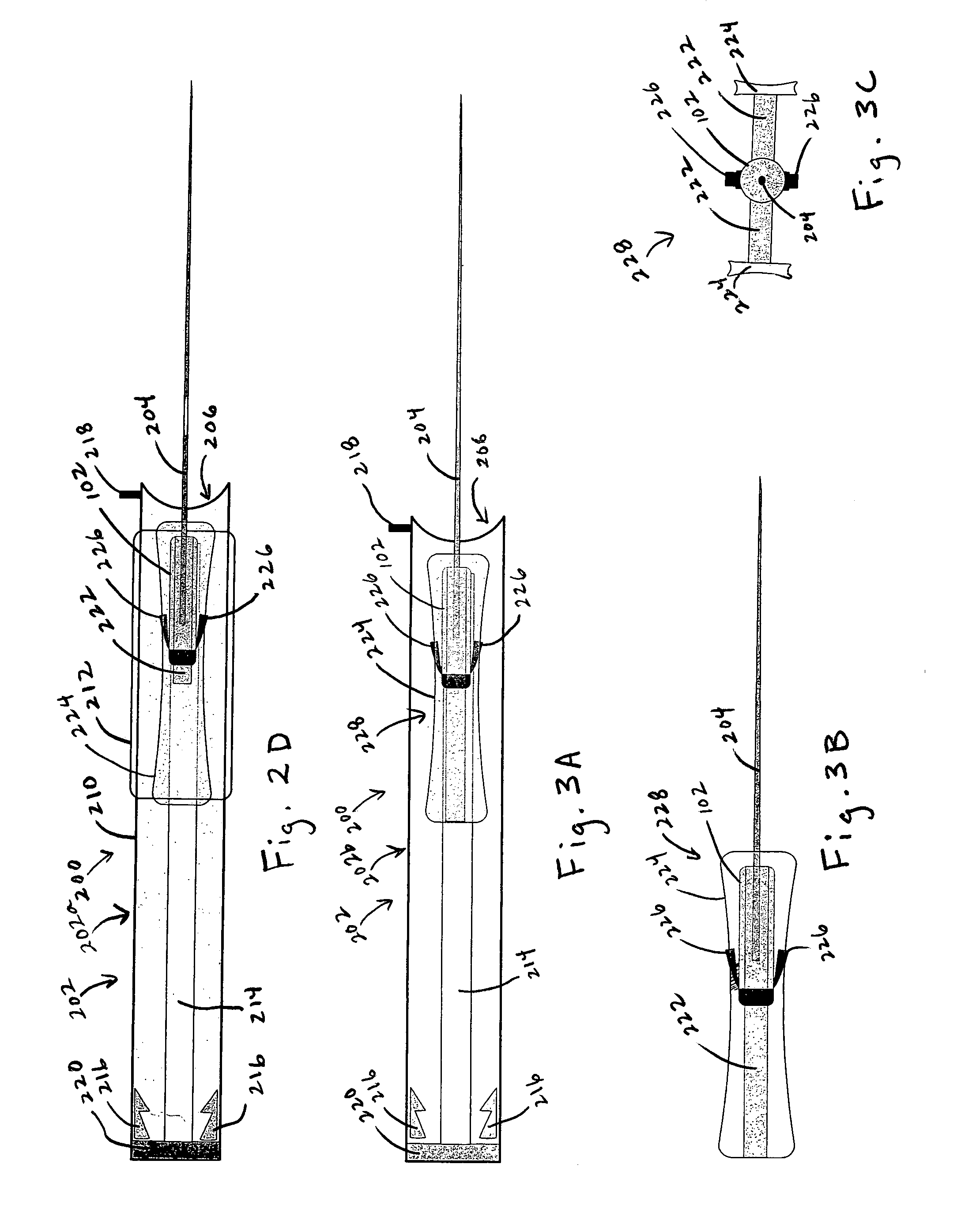Bloodless intravenous integrated catheter
a technology of intravenous catheter and blood, which is applied in the field of medical devices, can solve the significant health risks to patients, risks associated with blood spillage, and current major problems of blood spillage, and achieve the effect of preventing blood spillage and being convenient to us
- Summary
- Abstract
- Description
- Claims
- Application Information
AI Technical Summary
Benefits of technology
Problems solved by technology
Method used
Image
Examples
Embodiment Construction
[0059]The present invention represents the discovery that an intravenous catheter system (IV) can be made “bloodless,” i.e., that blood is prevented from spilling during the administration of the IV. More specifically, the present invention utilizes plug-like and valve-like features, singularly or in combination, to contain blood that would otherwise have leaked out during the placement of an IV without the features of this invention.
[0060]The present invention also represents the discovery that an IV can be cross-platform or integrated in nature and allow interconnection with several popular devices related to intravenous fluid transfer. A first device that the present invention allows interconnection with is a typical syringe having a needle with a sharp and beveled tip. A second device that the present invention allows interconnection with is a needle with a non-piercing tip called a “blunt.” Thirdly, the present invention allows interconnection with needleless devices. Popular n...
PUM
 Login to View More
Login to View More Abstract
Description
Claims
Application Information
 Login to View More
Login to View More - R&D
- Intellectual Property
- Life Sciences
- Materials
- Tech Scout
- Unparalleled Data Quality
- Higher Quality Content
- 60% Fewer Hallucinations
Browse by: Latest US Patents, China's latest patents, Technical Efficacy Thesaurus, Application Domain, Technology Topic, Popular Technical Reports.
© 2025 PatSnap. All rights reserved.Legal|Privacy policy|Modern Slavery Act Transparency Statement|Sitemap|About US| Contact US: help@patsnap.com



